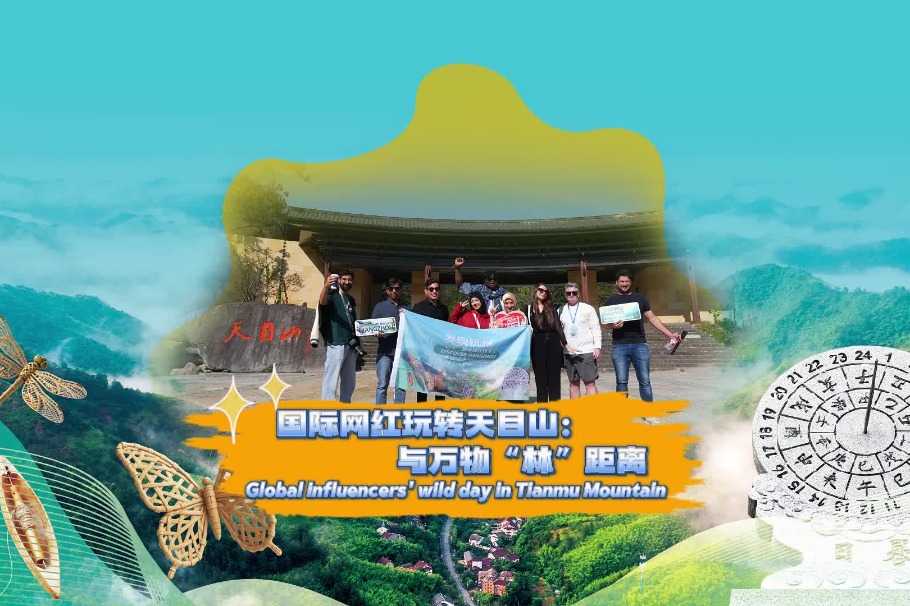Five years after eliminating absolute poverty: where China stands and what comes next

BEIJING -- Five years ago, Meishu village, tucked deep in the mountains of Central China, joined thousands of villages across the country in shedding the official label of poverty.
Government support had helped upgrade roads, improve housing and create new income sources. But for the small settlement long troubled by isolation and barren land, the harder question came next: how to prevent poverty from returning.
It was the same question facing Yang Xiaopeng, the newly elected village Party chief who had returned home after years away.
Yang joined the army in 2003 and started a business after leaving service. But in September 2020 -- the year China escalated the fight against poverty to a final push -- he came back to Meishu, Zhongfang county, Central China's Hunan province, determined to lead the village toward prosperity.
After exhaustive research and discussions, Yang and his fellow villagers decided to plant Callicarpa, or Zi Zhu in Chinese, a medicinal herb suited to the region's steep terrain, and successfully struck a long-term deal to supply a pharma company. As the business boomed through hard, concerted efforts, the village managed to build a new access road, replacing the narrow, winding path that once made transportation difficult.
Over the past two years, besides the thriving herb farming, Meishu tapped its natural scenery to launch a tourism cluster, featuring camping sites, guesthouses and restaurants, which attracted a steadily growing stream of visitors.
"Last year, our canyon rafting project attracted 15,000 tourists and generated 800,000 yuan (about $112,880) in revenue, and the Zi Zhu planting area expanded to 65 mu (around 4.33 hectares), providing jobs for more than 300 villagers," Yang said.
Today, as visitors cross the stone bridge at Meishu's entrance, a transformed landscape comes into view. Freshly paved streets are lined with houses, solar-powered lights illuminate the paths, and herb fields stretch across the surrounding mountainsides. "The environment is better, and people can earn a living right at home. Life feels more hopeful now," Yang said.
In a span of eight years, China lifted nearly 100 million people out of destitution, officially eliminating absolute poverty -- based on a national poverty line of 2,300 yuan per person per year at the 2010 price level -- at the end of 2020. Yet the long-term sustainability of this achievement was once a major concern.
The Chinese leadership anticipated the risk clearly. In a December 2020 document, the authorities emphasized that "lifting the poverty label is not the end" and set a five-year transition period to move from poverty-alleviation campaigns to a longer-term strategy aimed at consolidating gains and advancing rural revitalization across the board.
Five years on, a range of policy measures have been rolled out, making a tangible impact. By the end of July this year, authorities had provided targeted assistance to more than 6 million people identified as being at risk of falling back into poverty, and supported the annual employment of more than 30 million workers previously lifted out of poverty. The government also invested a cumulative 850.5 billion yuan in formerly impoverished areas to improve infrastructure and public services, including transportation, water conservancy, education and healthcare.
"China has firmly upheld the bottom line of preventing large-scale relapse into poverty," said Han Jun, minister of agriculture and rural affairs. He added that as government support measures continue to strengthen, living standards have improved and the economic vitality of formerly impoverished regions has increased.
Official data showed that the per capita disposable income of rural residents in counties lifted out of poverty rose from 12,588 yuan in 2020 to 17,522 yuan in 2024, which, after adjustments for prices, grew at an average annual real rate of 7.8 percent -- 0.9 percentage points faster than the national rural average.
Like Meishu, many former poverty-stricken areas have not slid backward but instead found new engines of growth. All counties have developed two to three specialty industries each, with a combined value now exceeding 1.7 trillion yuan.
In Jinping county, Southwest China's Guizhou province, support from a more affluent coastal region has spurred rapid growth in the goose industry since 2021. The sector now encompasses breeding, meat processing, and even badminton shuttlecock production, with a cluster of sports equipment manufacturers emerging in the area.
With one in every 10 badminton shuttlecocks used globally now produced in Jinping, the industry has helped increase the annual income of more than 16,000 local households by over 1,000 yuan each.
Far to the northwest, Banyan, an ethnic village in Qinghai province, has charted a green path to prosperity. The village harnessed its abundant sunlight to develop distributed solar power projects, pursued afforestation to increase its trees including pine and spruce to nearly 290,000, and replaced traditional fire-heated brick beds with electric heating.
"With the solar panels installed, each household receives 2,500 yuan in dividends every year, which is equivalent to the income from farming 10 mu of land," said Lyu Yourong, a local villager.
Banyan -- meaning "a place of prosperity and bliss" in the Tu ethnic language -- has become Qinghai's first zero-carbon village.
As the five-year transition period starting in 2021 draws to a close, what comes next?
"We must remain clear-headed that the out-of-poverty regions still have weak foundations, and some households will continue to face risks of slipping back to poverty," Han Jun said.
The upcoming 2026-2030 period, China's next national planning cycle, will be the first following the transition. According to experts, some rural residents will still need government support in the event of illness, accidents, or natural disasters, while certain regions will require targeted assistance to overcome development challenges.
China will continue to consolidate and expand its achievements in poverty alleviation, according to the Communist Party of China Central Committee's recommendations for formulating the 15th Five-Year Plan (2026-30) released last month. Through the establishment of regular mechanisms, increased development-based assistance, and strengthened policies for key counties in need, every effort will be made to prevent any large-scale lapses or relapses into poverty.
Han Wenxiu, executive deputy director of the Office of the Central Committee for Financial and Economic Affairs, stressed the need to maintain stable fiscal spending, financial support and resource allocation for regions that have lifted themselves out of poverty, including long-term assistance to less developed regions, especially 160 key counties for rural revitalization.
"Overall, the goal is for rural residents to enjoy steadily improving lives and to move together toward the promising future of Chinese modernization," he said.
- Five years after eliminating absolute poverty: where China stands and what comes next
- China mandates no less than 2 hours of daily physical activity for school students
- Study finds young-onset dementia outpacing late-onset dementia in China
- Chinese 'lunar soil bricks' return from space, paving way for construction on moon
- Over 10,000 reports of persecution of Taiwan compatriots by separatists received
- Mainland increases entry points for Taiwan compatriots





































